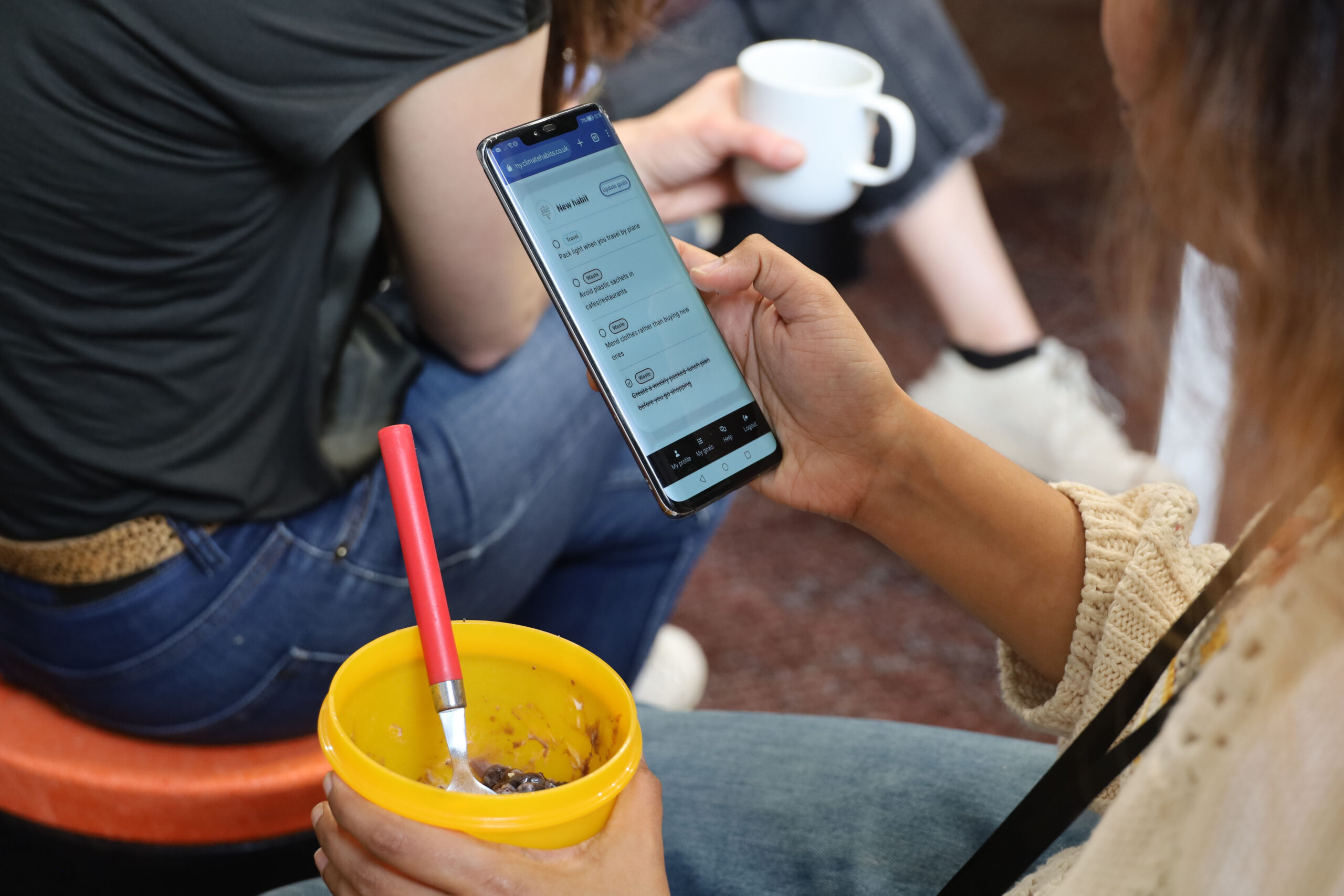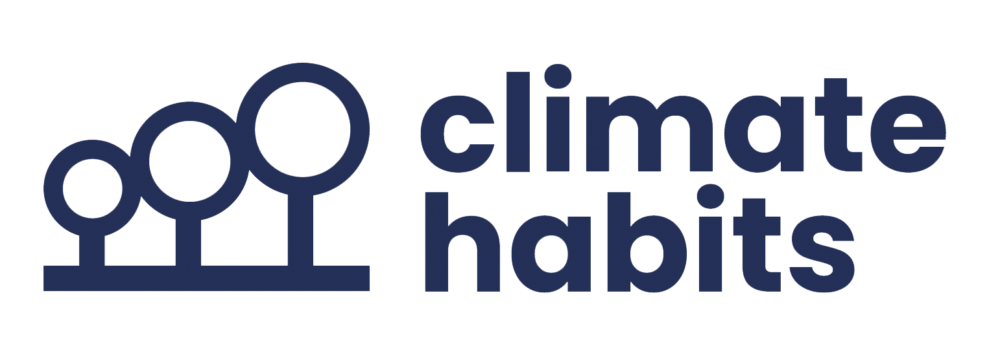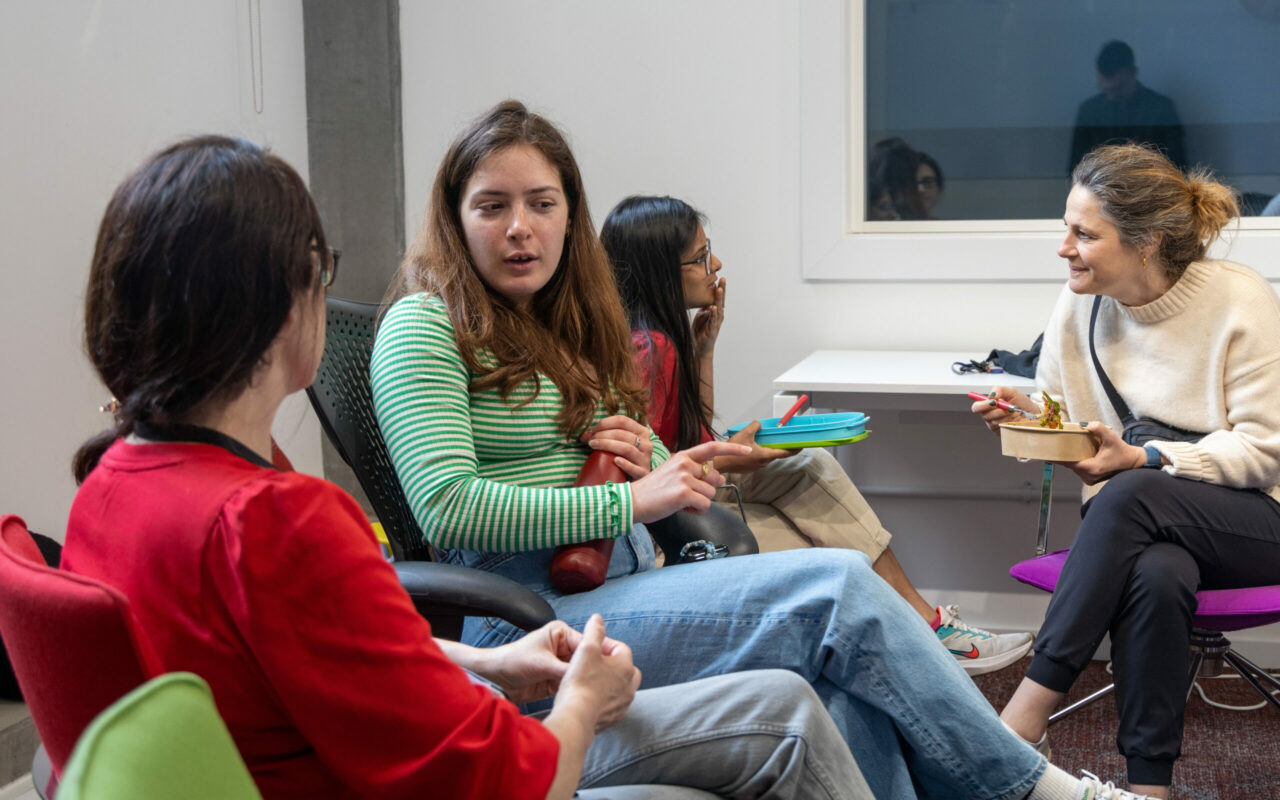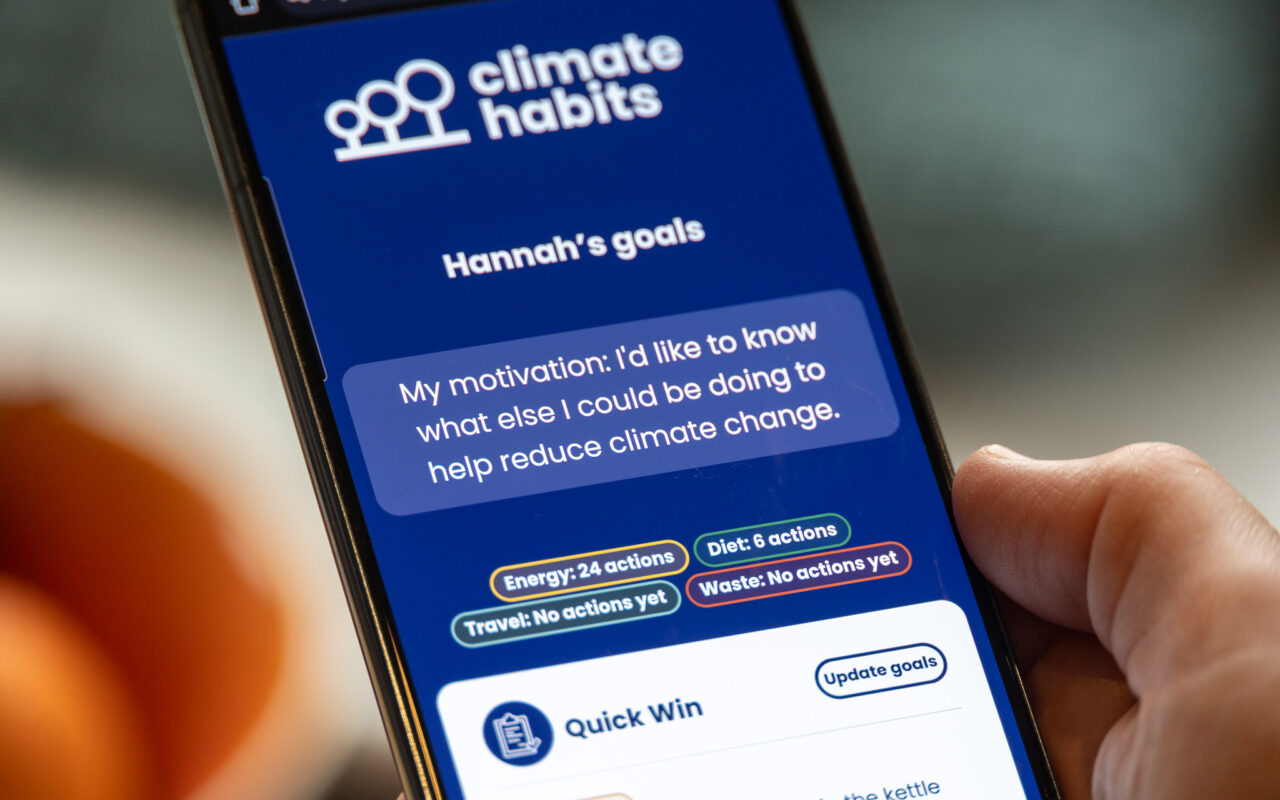It’s not every day you come across the holy trinity of an idea you can get excited about, a founder who’s open-minded and hardworking, and some practical support you can offer. But after chatting to Jude about her Climate Habits programme, I realised this could be it – and might be fun too.
After leaving the business I founded, Helpful, in 2021, I knew I wanted to use some of my new time to work on sustainability – amongst other causes close to my heart. I also had a vague sense that having been on the small business journey myself for 10 years or so, I wanted to help other entrepreneurs to get started and navigate the challenges of growing a business.
Jude had already run a pilot of Climate Habits with a large national employer, combining weekly Teams presentations over three weeks, a WhatsApp group chat and a Miro board to get groups of colleagues together to consider and take action on their personal climate impact. She had great stories of the lifestyle changes people had made, and it sounded like the accountability from sharing personal progress with work colleagues really helped.
I liked the concept, and Jude’s positive, practical approach to getting people to take action by consciously considering the process through the lens of behavioural science:
- What are my default habits when it comes to recycling or driving, and why?
- What support do I need to take the next step to cook or shop in a more sustainable way?
- How can I prime myself to apply my principles to decisions in the future when I’m speccing out big ticket items like home improvements or a new car?
- And how do I overcome the inertia and its-all-too-complicated-ness of living sustainably (answer: stay positive, do the things you can, don’t get bogged down)
Joining the team
So, at the start of this year I agreed to work with Jude as a technical advisor to help scale and develop Climate Habits. First on the list has been to develop a more flexible, efficient web application platform, so participants can use an app on their phones or laptops to enrol, choose the lifestyle actions they want to work on during the programme, and assess their progress (more on that in another post). Alongside the app, we’ve been working on the – I’d say equally hard – challenge of trying to articulate what Climate Habits is about and why people should get involved, on a client-facing website.

And alongside all that, we’ve been considering the business strategy for the company. I’ve never been a big one for business plans and forecasts, but I’ve learned that at the minimum, a product-based business needs some definition of its vision, audience, business model and scale ambition if you’re going to communicate what you do coherently and remain happy with your baby as it grows and evolves. Ultimately, this is Jude’s business, not mine, so it’s important that she has the final say on all this, but I’ve been trying to ask the questions it took me years to realise I needed to ask myself.
Dogfooding the product 🐶
Over the last three weeks I’ve been part of a Climate Habits group that Jude has been facilitating, so I’ve been through the process for myself. It’s inspiring stuff, with just enough structure to feel purposeful and a positive blend of simple technology and people helping each other.
Week 1 kicked off with our group establishing our baseline activity on climate change, and spending time in the workshop setting up personalised to-do lists of goals across the domains of energy, travel, diet and waste. We shared photos and updates in a friendly WhatsApp group about how we were getting on with our ‘quick wins’ (I boldly tried oat milk rather than more carbon-intensive dairy milk in my tea; outcome: it was fine). A week later, we met again to compare notes, and moved on to habits we wanted to change, and actions which might take a bit more planning. In the final session a week later, we looked at planning to make longer term changes, and also how we might use our own influence in various domains to promote the kind of sustainability we want to see.

What I liked most about the programme is that there’s no pressure to do a certain thing or be a certain way. There’s lots that each of us can do to reduce our climate impact, whether we’re living with parents while working 9-5, or a high-powered CEO with an EV and exotic family holidays. You don’t have to be militant about the climate crisis if that’s not your style – you can get on quietly with just doing your bit, or use your influence behind the scenes to push for the changes you want to see in the world. If tweaking your tyre pressures or putting beans in your bolognese is more your style than protesting with ink in the Trevi fountain, then Climate Habits has something for you (but hey, if you want to chain yourself to something to raise awareness, by all means add it to your goals list in the app, and tell us all on the WhatsApp group chat how you get on).
Want to try it out?
Now we’re looking to recruit some more people from progressive and positive employers to go through the Climate Habits programme with their own teams, and help us refine the app and workshop experience further.
For less than an awayday hotel bill, it’s a great way to get the team bonding about something other than work projects. It’s a flexible way to get practical climate action going rapidly at your workplace. It’s a tangible, measurable way to demonstrate to clients that you walk the talk on sustainability, social value and ESG. And – whisper it – it’s a way to have fun while doing something useful for the planet.
Drop us a line if you’d like to find out more and Jude or I can show you how it works over an oat milk tea.





